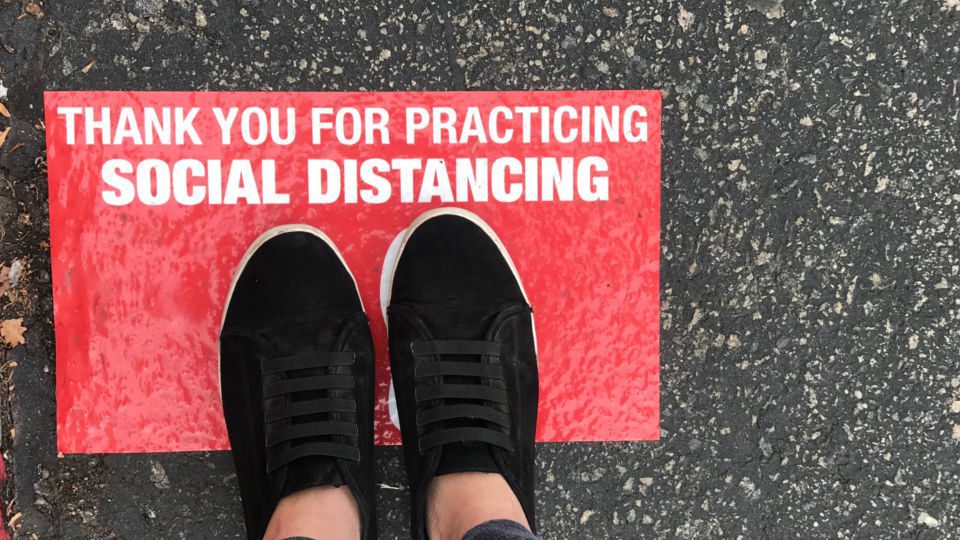Over the summer, Retail TouchPoints sought to provide some clarity despite the chaos surrounding the coronavirus pandemic. For the Retail Reset virtual forum, the editorial staff sat down with more than 30 influencers, executives and analysts to zero in on the topics and trends they believed were most critical in these times.
While uncertainties still abound, these experts spotlighted a range of new opportunities for innovation, differentiation and growth. And there’s much more beyond these six critical trends — get more insights from top industry experts by visiting the Retail Reset hub.
1.
Company culture will stay in the spotlight
“Culture is made up of two things: the beliefs the organization has and the behaviors that are influenced by those beliefs. When you have beliefs that result in actions that actually move your business forward and serve customers well, things are aligned. But the reality is, most organizations don’t have a good understanding of what beliefs are and aren’t working for them.”
- Charlene Li, Author, The Disruption Mindset
Even though Charlene Li has made a career out of studying disruption, she admits she has never seen change occur so rapidly as it has during the pandemic. While many industries have been impacted, she believes retailers have the most opportunity for growth and innovation. It all starts with culture, which is driven by openness, agency and bias for action.
2.
Branding will drive business strategy more than ever
“What happens when you can’t go to the store or studio? If those are critical elements in your brand DNA, how are you going to reach consumers? That’s where being sticky, communicating with customers, and constantly giving them thoughtful content, is really going to be important going forward.”
- Kristin Bentz, Founder, KB Advisory Group
What do Nike and Peloton have in common? Their focus on fitness aside, both companies successfully harnessed their powerful brand equity to build digital communities and services during the pandemic. Powered by an ecosystem of relevant, high-value content, these brands were able to keep business running — and keep customers engaged. Kristin Bentz believes having an ecosystem and culture that supports customers creates the requisite “brand stickiness” across all channels.
3.
Agility will be key for business planning and collaboration
“While we’re all facing big challenges and significant adversity, there’s an incredible motivating factor to drive change in your business. Things that used to take months or years can now take place in days or weeks. There’s no better time than when everything is up in the air to take a look, reshuffle everything and drive change based on how you can really deliver for your customers.”
- Duncan Blair, Director of Marketing, Article
“Agility” has been an industry buzzword for years, but COVID has uncovered many success stories and lessons learned in agile working. Duncan Blair, Director of Marketing for Article, shared how COVID has reaffirmed the DTC brand’s data-driven approach to customer experience, and why agility is key to helping the business always learn, improve and find new opportunities for differentiation.
Advertisement
4.
Marketing will need to prioritize value amplification
“Are brands doing something meaningful or just ticking the box to say they belong? People are very much looking at things critically to see if brands are taking authentic action and if these actions are going to have impact. Brands and businesses need to be mindful of that and think about how they partake and react, and what their role should be.”
- Brian Rafferty, Global Director, Business Analytics & Insights, Siegel+Gale
As COVID reached its peak, the U.S. experienced a social uprising with the Black Lives Matter movement, creating a perfect storm for marketing and communications professionals, as they struggled to answer: What is the best way to engage with our audience? What is our position on health, safety and social issues? Brian Rafferty of Siegel+Gale shared his perspectives on this critical point in the marketing profession, and what brands and businesses can do to set their strategies for the future.
5.
Adoption of digital tech will continue to accelerate
“Consumers that have learned to rely on digital shopping tools more are likely to permanently adopt them. A lot of evidence points to the growth being among first-time users, so in general you should predict those things are going to stick.”
- Jason Goldberg, Chief Commerce Strategy Officer, Publicis
Prior to the pandemic, about 50% of all purchase decisions were influenced by digital channels. Jason Goldberg, Chief Commerce Strategy Officer for Publicis, now believes it’s closer to 70%. Although Goldberg thinks many consumers will fully adopt new digital tools for browsing and buying, he warns retailers that they shouldn’t look at “over-hyped” technology as a panacea for their challenges. Instead, they should take a strategic approach to technology adoption that’s driven by category-specific use cases and end-user value.
6.
Brands will need to balance digital and physical more carefully
"Brands and retailers have to be careful to not jump too much on the bandwagon of just digital, just automation and no human interface at all. That's not going to be a good differentiating factor anymore. It’s going to be about having all these digitally optimized solutions but having an element of human touch and personalization.”
- Virna Sekuj, Strategic Insights Manager, GlobalWebIndex
Everyone’s talking about the shift to digital channels, but many experts believe that in-person experiences — or at the very least face-to-face interaction — will play more important roles than ever. Based on GlobalWebIndex research, Virna Sekuj believes that brands will need to balance digital and physical channels more carefully to find the right mix to help their brands differentiate.



















